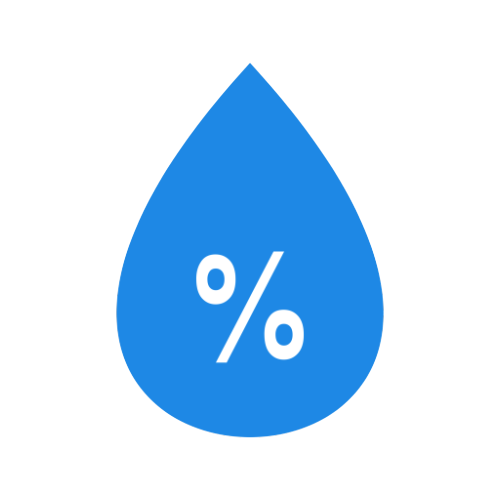PLANT CARE ( Zamioculcas Zamiifolia | ZZ Plant ) BUY NOW
 |
Average warmth is fine of approximately 60-75°F (15-24°C) and no lower than 45°F (8°C). |
 |
Grows fine with low levels of light, but it’s best to avoid direct sunlight. |
 |
Don’t sweat it. Average home humidity is fine; can tolerate dry air. |
 |
Water every 2-3 weeks, allowing the soil to dry out between watering. |
ADDITIONAL CARE
Care of Zamioculcas Zamiifolia | ZZ Plant is simple, making it the gold standard for houseplant beginners, preoccupied office workers, and brown thumbs. The Zamioculcas Zamiifolia | ZZ Plant luckily doesn’t need any special type of potting soil: any well-drained potting soil will do. As for feeding it, apply a balanced liquid houseplant fertilizer (20-20-20) once a month when watering. Situate your Zamioculcas Zamiifolia | ZZ Plant in low to bright indirect light, and water when fully dry.
Zamioculcas is a genus of flowering plants in the family Araceae, containing the single species Zamioculcas zamiifolia. It is a tropical perennial plant native to eastern Africa, from southern Kenya to northeastern South Africa. Common names include Zanzibar gem, ZZ plant, Zuzu plant, aroid palm, eternity plant and emerald palm.[2] It is grown as an ornamental plant, mainly for its attractive glossy foliage and easy care.
Dutch nurseries started wide-scale commercial propagation of the plant around 1996.[3] It was first described as Caladium zamiifolium by Loddiges in 1829, moved to his new genus Zamioculcas by Heinrich Wilhelm Schott and given its established name Zamioculcas zamiifolia by Adolf Engler.
The roots of the plant are rhizomes, which is the reason behind the plant being drought tolerant as the rhizomes store water in it that the plant can use later. Thus the plant should be watered only when it is dry so you don’t overwater. They require good drainage system and can live on moderate to indirect sunlight but it should be noted if the leaves become long. This is due to the lack of sunlight.
Etymology
The botanical name Zamioculcas derives from on the one hand the superficial similarity of its foliage to that of the cycad genus Zamia and on the other hand its kinship to the genus Colocasia, whose name comes from a word culcas or colcas in a Middle Eastern language of antiquity[4] and which is named qolqas (Egyptian Arabic: قلقاس, IPA: [ʔolˈʔæːs]) in Arabic.[5] Botanical synonyms include Caladium zamiaefolium, Zamioculcas loddigesii and Z. lanceolata.
Description
It is a herbaceous perennial growing to 45–60 centimetres (17.7–23.6 in) tall, from a stout underground, succulent rhizome. It is normally evergreen, but becomes deciduous during drought, surviving drought due to the large potato-like rhizome that stores water until rainfall resumes. The leaves are pinnate, 40–60 centimetres (15.7–23.6 in) long, with 6–8 pairs of leaflets 7–15 centimetres (2.8–5.9 in) long; they are smooth, shiny, and dark green. The stems of these pinnate leaves are thickened at the bottom.
The flowers are produced in a small bright yellow to brown or bronze spadix 5–7 centimetres (2.0–2.8 in) long, partly hidden among the leaf bases; flowering is from mid summer to early autumn.
Zamioculcas zamiifolia contains an unusually high water contents of leaves (91%) and petioles (95%)[6] and has an individual leaf longevity of at least six months, which may be the reason it can survive extremely well under interior low light levels for four months without water.[7]
Cultivation
Zamioculcas zamiifolia may be propagated by leaf cuttings: typically, the lower ends of detached leaves are inserted into a moist gritty compost and the pot enclosed in a polythene bag. Though the leaves may well decay, succulent bulb-like structures should form in the compost and these may be potted up to produce new plants. The process may take upwards of one year. The plant can also be propagated by division. The plant impresses especially by the thick, dark green, shiny leaves. Due to its strong green leaves, it is especially suitable for open, bright rooms.[8]
Usage in traditional medicine
Though little information is available, Z. zamiifolia is apparently used medicinally in the Mulanje District of Malawi and in the East Usambara mountains of Tanzania where juice from the leaves is used to treat earache.[9]
In Tanzania a poultice of bruised plant material from Z. zamiifolia is used as a treatment of the inflammatory condition known as “mshipa”.[10]
Roots from Z. zamiifolia are used as a local application to treat ulceration by the Sukuma people in north-western Tanzania.[11]
Chemicals
Zamioculcas zamiifolia contains acylated C-glycosylflavone apigenin 6-C-(6″-O-(3-hydroxy-3-methylglutaroyl)- β-glucopyranoside)[6]
Air purification
A 2014 study from the Department of Plant and Environmental Science at the University of Copenhagen shows that, in a laboratory setting, the plant is able to remove volatile organic compounds in this order of effectiveness: benzene, toluene, ethylbenzene and xylene at a molar flux of around 0.01 mol/(m2 day). The same study stated that any effectiveness on indoor environments is inconclusive.[12]
Toxicity
Zamioculcas zamiifolia is part of the family Araceae, which includes many poisonous genera, such as Philodendron, which contains calcium oxalate.
An initial toxicological experiment conducted by the University of Bergen in 2015 on extracts from Z. zamiifolia using brine shrimp as a lethality assay did not indicate lethality to the shrimp even at concentrations of extracts up to 1 mg/mL. The scientists conducting the experiment found that “On the contrary, it could appear as though the extract contributed to improvements in the vitality of the larvae”.[6]



